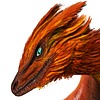HOME | DD
 Rexfivenine — Cretaceous Commenslism
Rexfivenine — Cretaceous Commenslism

#benthic #commensalism #gillicus #westerninteriorseaway #cretaceous #paleoart #cretaceousperiod #mezozoic #paleoillustration #platecarpus #ptychodus
Published: 2018-12-02 20:34:18 +0000 UTC; Views: 1363; Favourites: 40; Downloads: 0
Redirect to original
Description
The massive benthic feeding neoselachian shark Ptychodus mortoni is looking for mollusks on the Niobrara seabed. Its feverish activity stirs up the sand, exposing fish that use the sandy bed for cover. This hasn’t gone unnoticed by the passing mosasaur Platecarpus tympaniticus, and takes the opportunity for a relatively easy meal. A Gillicus arcuatus joins the frenzy; picking off any would be escapees from the mosasaurs jaws.
Ptychodus mortoni- Ptychodus was about 10 meters (33 feet) and was a bearer of large serrated spines along its dorsal fins. It also had a massive arrangement of crushing teeth, as many as 550. Its biological range is limited to the middle and southern end of the Western Interior Seaway. I gave Ptychodus a nurse shark like appearance to complement its benthic lifestyle. A low caudal fin and omission of lower tail fin, adapted for slow but maneuverable swimming.
Platecarpus tympaniticus- Platecarpus grew to 4.3 meters (14 feet) and was one of the most common mosasaurs of the Western Interior Seaway. Paddle like fins and a bi-lobed tail suggest strong swimming, like that of a shark. It was relatively simple to reconstruct given how much we know about it. I gave my Platecarpus a coloration inspired by the Southern Right Whale Dolphin, perfect for counter shading.
Gillicus arcuatus- A 2 meter (6 foot) icthyodectid fish native to the Western Interior Seaway. Small teeth lined its jaws, and it would have used those suck smaller fish into its mouth, as well as filter feed. I gave it a general “striped” coloration, possibly to break up its outline in the open ocean. I also wanted to show it as an opportunistic predator in its own right, rather than being choked on by a larger icthyodectid.
Related content
Comments: 5

Good job on the clouds of silt in the water - that had to be tricky!
👍: 0 ⏩: 1

Thank you! Surprisingly the hardest part was the seabed given how tedious it was.
👍: 0 ⏩: 0


















